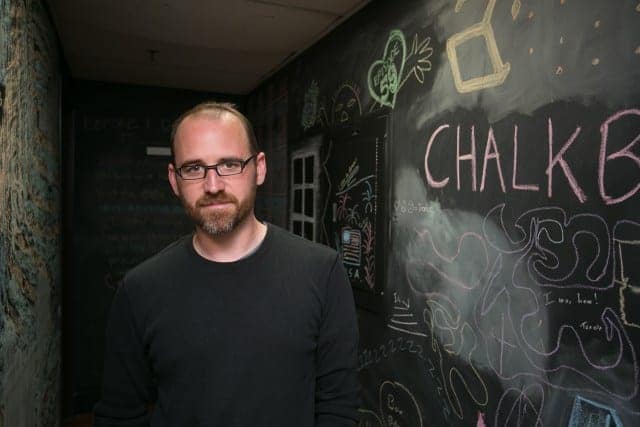99% Invisible: the podcast where design meets curiosity


99% Invisible transforms the podcast into an art form of exquisite elegance. It is — all at once — sleek, thoughtful, insouciant and devilishly clever. Developed, hosted and handcrafted by Roman Mars, 99% invisible delves into the world of design and architecture, but in an expansive way.
The show’s name is taken from a quote by Buckminster Fuller: “Ninety-nine percent of who you are is invisible and untouchable.” The podcast, therefore, does a deep dive into design in everything from board games to milk cartons to currency.
The show started life as a project of KALW public radio in San Francisco and the American Institute of Architects in San Francisco.
Each podcast episode focuses on a single topic — a hotel in the Bowery in lower Manhattan or the the color of paper currency — and is introduced and sometimes narrated by Roman Mars.
Roman Mars is also a founding member of the podcast collective, Radiotopia, which is an independent production and raises all its funds directly from the listeners, most notably from its record breaking Kickstarter campaign and from podcast underwriters.
During a 2015 interview with Forbes magazine, Mars was asked if people listen to podcasts in a fundamentally different way than a radio show.
“People typically listen to podcasts by themselves, often with earbuds,” Mars began. “It’s right there in their ears. It’s not playing over speakers at the bar. And even more important, it’s totally the multitasking medium. We’re in a world now where you have something to do at all times, and podcasts are available for you all the time, on demand.”
The podcast boasts an impressive staff from senior producer Delaney Hall, who helped launch Reveal, an investigative radio show and podcast and won a Peabody Award, to Avery Trufelman and Katie Mingle, who each do double duty as hosts and producers.
Mars has also contributed to radio programs such as Radiolab and Planet Money. Fast Company magazine identified him as one of the 100 most creative people (number 63) of 2013.
With a deep, sonorous voice and alpha wave cadence, Mars makes a perfect vocal companion to the episodes. He gently flames the embers of our curiosity as we sink into each episode.
For example, award-winning episode 110 about the structural integrity of the CitiCorp Center in Manhattan told the story of an engineering student who found a fatal design flaw that threatened the building’s ability to withstand severe storms. Ironically, the flaw was missed by one of the world’s preeminent architects.
In episode 164, 99% Invisible investigated the golden age of billiards in the mid-19th century and how the game was standardized, including billiard balls, which had been made of ivory. The episode explores the search for the perfect material for billiard balls — Bakelite plastic — and how that search also created celluloid to be used as imitation ivory.
There is no topic out of bounds for the peripatetic podcast. Water fountains, lawns, Freud’s couch, postage stamps, escalators, Superman, and even dentures make for fascinating stories.
The episodes unfold slowly and carefully and often encapsulate tiny morality plays and reveal the hidden genius of inspired design.
In late 2018, 99% Invisible released a six-part series called Articles Of Interest – a mini-series of what we wear. Produced and hosted by Avery Trufelman, the series includes episodes about the origin of plaid – Scotland – and why lumberjacks began wearing plaid. In later episodes, Trufelman discusses what makes a Hawaiian shirt authentic – the pocket matches the shirt – and then delves into why women’s clothes have so many fake pockets.
Once or twice a year, the staff records Mini-Stories episodes, which the staff describes as “fun, quick hit stories that don’t quite warrant a full episode.”
Early this year, an episode included a story about how episodes of cop TV shows set in New York City almost always include a scene down a dark, seedy back alley. From these shows, viewers assume that New York City is full of these alleys. There’s just one problem: there are almost no alleys in New York City. The episode then explains why with the listener receiving a fascinating history of urban planning.
In another mini-story, Daisuke Inoue, the inventor of the Karaoke machine, is profiled about he created the culture-changing device in the 60s and neglected to get a patent, probably costing him about $80 million in future earnings.
So far this year one of the podcast’s most notable episodes is called Atomic Tattoos where Mars weaves an incredible tale of how high school students in Lake County, Indiana in the 1950s had their blood tested for type then sent to the library to have a tattoo placed under each student’s left arm, listing the blood type of the student. At the height of the Cold War, the idea was to make it easier to transfuse blood in case of atomic war. Episode producer, Liza Yeager, had a grandmother who lived there and actually had one of these tattoos.
Do you know why your knife, fork and spoon were made from silver? In episode 340 this February, author Kassia St. Clair talks about her new book The Secret Lives of Color and explains that around the 1500s, poisoning was the primary way to murder someone. Silver reacts with poisons and changes color, alerting the person about to ingest a poison to stop eating immediately.
Like other podcasts, 99% Invisible has spotlighted other podcasts including an episode earlier this year from podcast Twenty Thousand Hertz about the classic cartoon sound effects like the high-pitched whistle when Wile E. Coyote is outsmarted by the Road Runner and falls off a cliff.
One area where 99% Invisible leads other podcasts is the design and depth of information of its website. Typically an afterthought for even the most successful podcasters, 99% Invisible’s website has an architectural design baked into the visual presentation, in-depth episode notes and a weekly newsletter, which has shown to increase podcast listening rates and listener loyalty.
The podcast is downloaded more than three million times per month and typically ranks in the top 10 of Arts podcasts and top 20 overall on Apple Podcasts.
image credit: Bert Johnson













Comments
Comments are closed.